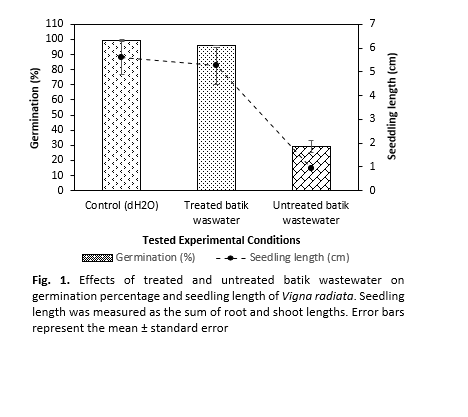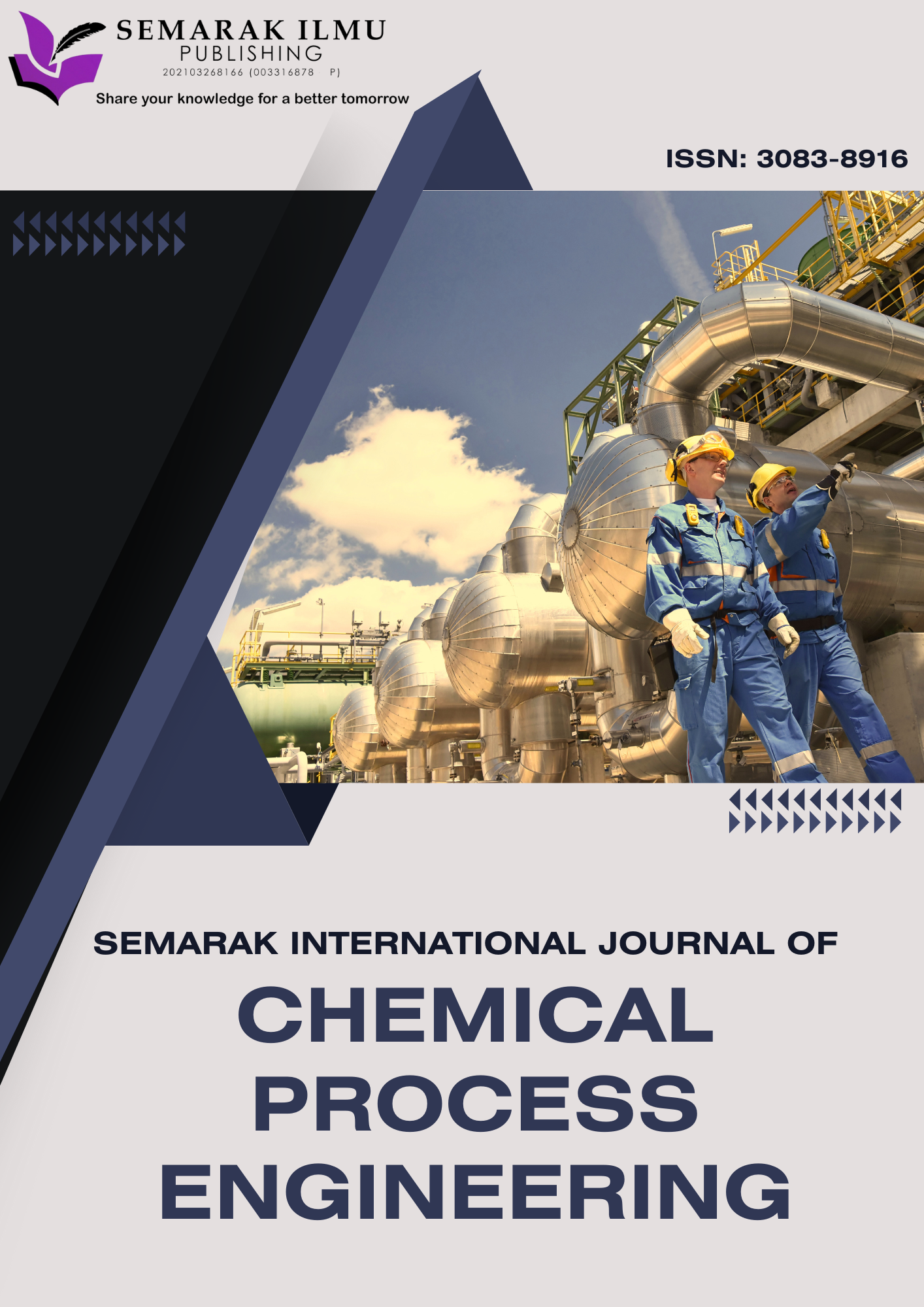Biodecolorization and Treatment of Synthetic and Batik Wastewater by Indigenous Bacterial Isolates for Sustainable Bioremediation
DOI:
https://doi.org/10.37934/sijcpe.3.1.1121%20Keywords:
Batik wastewater, Biodecolorization, Indigenous bacterial isolatesAbstract
The discharge of synthetic dyes from batik industries presents severe environmental risks due to their toxicity and persistence. Typical wastewater treatment processes are often costly and ineffective, necessitating eco-friendly alternatives. Microbial bioremediation offers a promising solution, yet the potential of indigenous bacterial strains remains underexplored. Therefore, this study evaluates the decolorization potential of two indigenous bacterial isolates, strain SK1 and strain SK2, under stationary and agitated conditions using Congo Red (CR) and Malachite Green (MG) as model dyes. Additionally, the strains were assessed for their effectiveness in treating actual batik wastewater and their impact on phytotoxicity. Under static conditions, strain SK1 and strain SK2 recorded growth values of 0.101 ± 0.027 and 0.201 ± 0.003 (optical density at 600 nm), with corresponding CR removal efficiencies of 3c ± 1% and 14b ± 2%, respectively after 3 days. Under shaking conditions, growth increased to 0.318 ± 0.001 for strain SK1 and 0.896 ± 0.018 for strain SK2, improving CR removal to 16b ± 2% and 38a ± 2%. For MG, both strains exhibited similar growth and performance under static conditions, with dye removal efficiencies of 12b ± 2%. Under shaking conditions, growth increased to 0.568 ± 0.031 for strain SK1 and 0.816 ± 0.018 for strain SK2, though dye removal remained low at 21a ± 2%. After 3 days, strain SK2 demonstrated strong bioremediation potential in actual batik wastewater, achieving reductions in biochemical oxygen demand (90%), chemical oxygen demand (94%), total suspended solids (91%) and total dissolved solids (51%), ensuring compliance with regulatory standards. Color removal reached 77% and pH was reduced from 10.5 to 7.7 In contrast, strain SK1 also reduced these parameters but failed to meet regulatory limits. Phytotoxicity tests showed that SK2-treated batik wastewater supported Vigna radiata germination with only 4% inhibition and a seedling length of 5.3 ± 2 cm, compared to untreated batik wastewater, which resulted in 71% inhibition and a seedling length of 0.9 ± 0 cm. These findings emphasize the potential of strain SK2 for eco-friendly dye decolorization and wastewater treatment. Future research will prioritize strain identification and process optimization to improve efficiency.









